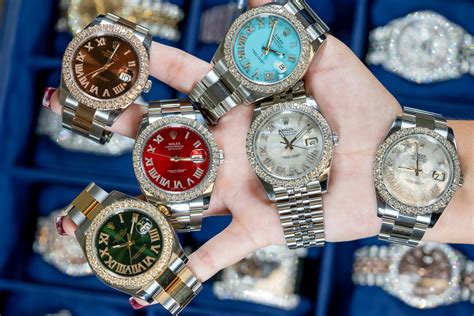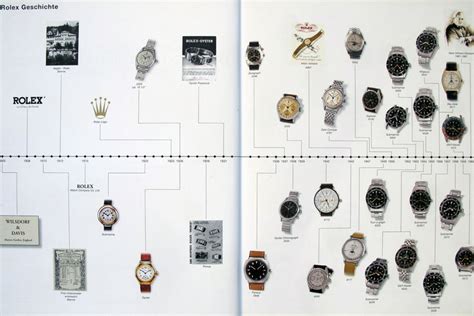during world war ii rolex founder hans wildof | Rolex wrist watch history during world war ii rolex founder hans wildof In 1903 Hans Wilsdorf moved to London, England where he went to work for another high-quality watchmaking company. In 1905—with a modest amount of money—Hans set . See more
Compared to an authentic belt, the “LV” buckle on a fake is often rounded, not straight, not as sharply or finely cut, and too thick or thin. [1] Look at the buckle’s color, too. The “LV” logo might be duller than a real “LV” logo and the hue may look off. For instance, a fake gold “LV” logo might be too brassy.
0 · history of Rolex watches
1 · hans wilsdorf Rolex history
2 · Rolex ww1 history
3 · Rolex wrist watch history
4 · Rolex watchmaker history
5 · Rolex hans wilsdorf
6 · Rolex geneva history
7 · Rolex founder
Discover Louis Vuitton Aerogram 35mm Belt: The Aerogram 35mm Belt is a new addition to the Aerogram Leather Goods lineup. Made from smooth box calf, this elegant accessory features a pin buckle with a matte black finish and a subtle LV signature on the edge of the strap. It is a wardrobe essential that unites understated style with a modern .
Hans Wilsdorf (22 March 1881 – 6 July 1960) was a German businessman, best known as the founder of Rolex and Tudor. Wilsdorf's philosophy for the companies was "only great marketing is needed to make a company successful". See more

Hans Wilsdorf was born in Kulmbach, Bavaria, to Protestant parents, Anna and Johan Daniel Ferdinand Wilsdorf and was the second son of a family of three children. See moreOn Rolex's 50th anniversary, in 1958, Wilsdorf shared the story of how he originally conceived the 'Rolex' name in 1908:"I tried combining the letters of the alphabet in every possible way. This gave some hundred . See moreIn 1927 Rolex patented and launched a commercially viable waterproof watch, "The Rolex Oyster". Rolex also selected watch dealers in each town to act as exclusive dealers, . See moreBy the start of World War II, Royal Air Force pilots were buying Rolex watches to replace their inferior standard-issue watches. When . See more
In 1903 Hans Wilsdorf moved to London, England where he went to work for another high-quality watchmaking company. In 1905—with a modest amount of money—Hans set . See moreIn 1914, a decade after Wilsdorf moved to London, World War I broke out, at which time Wilsdorf changed the name of Wilsdorf & Davis to The Rolex Watch Company Ltd. Fourteen days before World War I began, On July 14, 1914, Rolex was the first wristwatch . See more
In 1931 Rolex launched an automatic wristwatch: "The Rolex Perpetual". The Rolex Perpetual automatically wound itself by harnessing energy captured from the rotation of an internal . See more Hans Wilsdorf was completely devastated by the loss of his beloved wife and turned his focus toward Rolex. After May Wilsdorf passed away, Hans Wilsdorf transferred 100% of his shares in Rolex to the Wilsdorf Foundation, .
Wilsdorf's support of Allied POWs in World War II with replacement watches enhanced Rolex's reputation. After the war, he founded the Hans Wilsdorf .
The Rolex reference 3525, often referred to as the "Prisoner of War" watch, has a unique and poignant history, tied to the hardships of World War II and the resilience of those . So at this time, Rolex and Hans Wilsdorf had already laid the foundation for the Rolex of today! In this video, Hans Wilsdorf talks about his early years, and the contributions .Hans Wilsdorf (22 March 1881 – 6 July 1960) was a German businessman, best known as the founder of Rolex and Tudor. Wilsdorf's philosophy for the companies was "only great .
Hans Wilsdorf’s support for British POWs during World War II was remarkable. He offered free Rolex watches to prisoners of war, a gesture that spoke volumes about his . In 1934, Wilsdorf launched his own namesake brand of watches independent of Rolex, prominently featuring his name on the dial. However, Wilsdorf only produced these .And Volume 1 was written by Hans Wilsdorf, who is the founder of Rolex, and so he tells the founding story of Rolex in his own words. There's a lot of things that will surprise you in this .Hans Wilsdorf (22 March 1881 – 6 July 1960) was a German businessman, best known as the founder of Rolex and Tudor. Wilsdorf's philosophy for the companies was "only great marketing is needed to make a company successful".
Post-World War II, Hans Wilsdorf gifted special Rolex watches to the heroes of the era. In 1946, the 50,000th Rolex officially certified as a Swiss chronometer (a yellow gold Oyster Perpetual) went to General Henri Guisan, who was the commander in chief of the Swiss Army during the Second World War. Hans Wilsdorf was completely devastated by the loss of his beloved wife and turned his focus toward Rolex. After May Wilsdorf passed away, Hans Wilsdorf transferred 100% of his shares in Rolex to the Wilsdorf Foundation, which owns and runs Rolex today. The image below appears courtesy of Gisbert L. Brunner.Wilsdorf's support of Allied POWs in World War II with replacement watches enhanced Rolex's reputation. After the war, he founded the Hans Wilsdorf Foundation in 1945, marking the start of Rolex's philanthropic activities. The Rolex reference 3525, often referred to as the "Prisoner of War" watch, has a unique and poignant history, tied to the hardships of World War II and the resilience of those who endured it. Here’s an overview of the historical significance of this remarkable timepiece:
So at this time, Rolex and Hans Wilsdorf had already laid the foundation for the Rolex of today! In this video, Hans Wilsdorf talks about his early years, and the contributions he made to the horological world to popularize the wristwatch.Hans Wilsdorf (22 March 1881 – 6 July 1960) was a German businessman, best known as the founder of Rolex and Tudor. Wilsdorf's philosophy for the companies was "only great marketing is needed to make a company successful".
Hans Wilsdorf’s support for British POWs during World War II was remarkable. He offered free Rolex watches to prisoners of war, a gesture that spoke volumes about his character and the brand’s values. In 1934, Wilsdorf launched his own namesake brand of watches independent of Rolex, prominently featuring his name on the dial. However, Wilsdorf only produced these watches for a short six-year run. This was due to the rising anti .And Volume 1 was written by Hans Wilsdorf, who is the founder of Rolex, and so he tells the founding story of Rolex in his own words. There's a lot of things that will surprise you in this story, the first one being that he was the sole shareholder of Rolex.Hans Wilsdorf (22 March 1881 – 6 July 1960) was a German businessman, best known as the founder of Rolex and Tudor. Wilsdorf's philosophy for the companies was "only great marketing is needed to make a company successful".

Post-World War II, Hans Wilsdorf gifted special Rolex watches to the heroes of the era. In 1946, the 50,000th Rolex officially certified as a Swiss chronometer (a yellow gold Oyster Perpetual) went to General Henri Guisan, who was the commander in chief of the Swiss Army during the Second World War.
history of Rolex watches
Hans Wilsdorf was completely devastated by the loss of his beloved wife and turned his focus toward Rolex. After May Wilsdorf passed away, Hans Wilsdorf transferred 100% of his shares in Rolex to the Wilsdorf Foundation, which owns and runs Rolex today. The image below appears courtesy of Gisbert L. Brunner.Wilsdorf's support of Allied POWs in World War II with replacement watches enhanced Rolex's reputation. After the war, he founded the Hans Wilsdorf Foundation in 1945, marking the start of Rolex's philanthropic activities.
The Rolex reference 3525, often referred to as the "Prisoner of War" watch, has a unique and poignant history, tied to the hardships of World War II and the resilience of those who endured it. Here’s an overview of the historical significance of this remarkable timepiece: So at this time, Rolex and Hans Wilsdorf had already laid the foundation for the Rolex of today! In this video, Hans Wilsdorf talks about his early years, and the contributions he made to the horological world to popularize the wristwatch.Hans Wilsdorf (22 March 1881 – 6 July 1960) was a German businessman, best known as the founder of Rolex and Tudor. Wilsdorf's philosophy for the companies was "only great marketing is needed to make a company successful".
Hans Wilsdorf’s support for British POWs during World War II was remarkable. He offered free Rolex watches to prisoners of war, a gesture that spoke volumes about his character and the brand’s values.
In 1934, Wilsdorf launched his own namesake brand of watches independent of Rolex, prominently featuring his name on the dial. However, Wilsdorf only produced these watches for a short six-year run. This was due to the rising anti .

geeft nike gratis schoenen

Legit Tim. 2.56M subscribers. 1.8K. 125K views 5 years ago. WE GOT A LOUIS VUITTON BELT FROM IOFFER FOR ONLY $20 DEAL! MY FRIENDS ALL BELIEVED IT WAS REAL! WIN A $400 GUCCI BELT HERE Show.
during world war ii rolex founder hans wildof|Rolex wrist watch history


























